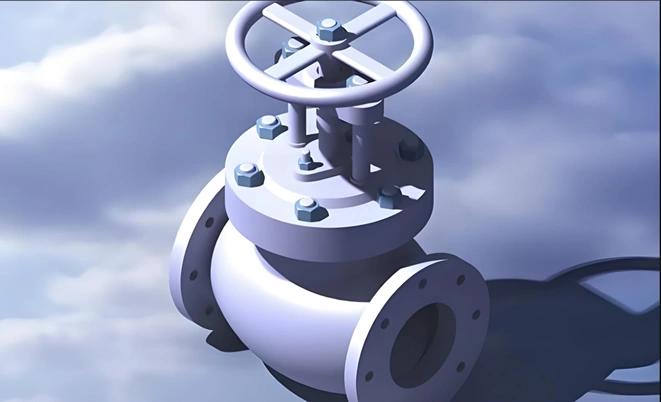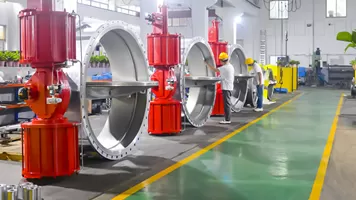What is a ball valve?
A ball valve is a type of flow control device that uses a spherical ball to control the flow of liquids or gases through a pipeline. The ball has a hole (called a port) through the center. When the ball is rotated 90 degrees by the valve handle or actuator, the hole aligns with the flow path of the pipeline, allowing fluid to pass through. When the ball is rotated back, the solid part of the ball blocks the flow.
Ball valves are known for their durability, excellent sealing properties, and ability to provide reliable shutoff. They are commonly used in various applications, including industrial processes, water supply systems, and oil and gas pipelines.
How do ball valves work?
A ball valve operates by using a spherical ball with a hole (called a port) drilled through the center. The ball is positioned within the valve body, and the valve handle or actuator controls its rotation. Here’s how it works:When the handle is turned 90 degrees, the hole in the ball aligns with the flow path of the pipeline, allowing fluid (liquid or gas) to flow through the valve.When the handle is turned back 90 degrees, the solid part of the ball blocks the flow path, effectively stopping the flow of fluid.Ball valves can also be used to control the flow rate by adjusting the handle to a position between fully open and fully closed, allowing partial flow through the pipeline.
Types of ball valves
Ball valves come in various types, each designed for specific applications and operating conditions. Below are some common types of ball valves, along with a description of each:
1. Cryogenic Ball Valve
- Cryogenic ball valves are designed for extremely low-temperature applications, such as in the handling of liquefied gases like LNG (liquefied natural gas) or nitrogen. These valves are built to withstand temperatures as low as -196°C (-320°F) and prevent leakage at these temperatures. They often have extended bonnets to ensure that the stem and packing remain warm and functional.
2. Double Block and Bleed Ball Valve
- A double block and bleed (DBB) ball valve provides double isolation by using two seating surfaces within a single valve. This type of valve is often used in pipelines where the process needs to be isolated for maintenance. The “bleed” function allows the space between the two seats to be vented, ensuring that the isolation is complete.
3. V-Port Ball Valve
- V-port ball valves have a V-shaped notch in the ball, allowing for more precise flow control. These valves are particularly useful in applications where the flow needs to be throttled, as the V-shape allows for a more gradual opening and closing, giving better control over the flow rate.
4. Floating Ball Valve
- In a floating ball valve, the ball is held in place by the compression of two elastomeric seats. The ball is not fixed to the stem, allowing it to move or “float” slightly. When the valve is closed, the upstream pressure pushes the ball against the downstream seat, creating a tight seal. This type of valve is commonly used in low to medium pressure applications.
5. Trunnion Ball Valve
- Trunnion ball valves have additional mechanical anchoring (trunnions) at the top and bottom of the ball. This design reduces the torque required to operate the valve, making it suitable for high-pressure applications. The trunnions hold the ball in place and ensure a tight seal, even in larger and more demanding operations.
6. Three-Way Ball Valve
- Three-way ball valves have three ports and are used to divert or mix fluid flows. They can be configured as T-port or L-port, depending on the desired flow path. These valves are commonly used in piping systems where the flow needs to be redirected between different pipelines.
7. Fully Welded Ball Valve
- Fully welded ball valves are designed with a body that is fully welded, eliminating the need for bolts and gaskets. This design enhances the valve’s strength and reliability, making it ideal for use in underground or subsea applications where maintenance is difficult. They provide a leak-free seal and are often used in high-pressure, high-temperature environments.
Advantages and Disadvantages of Ball Valves
Advantages:
Ball valves are widely used in various industries due to their simplicity, durability, and reliability. One of the key advantages of ball valves is their excellent sealing capability, which ensures minimal leakage. This makes them ideal for applications requiring a tight shutoff, such as in oil and gas industries. Additionally, ball valves offer quick and easy operation; a simple quarter-turn (90 degrees) is sufficient to open or close the valve, making them highly efficient for on/off control. The design of ball valves also allows for minimal flow resistance, leading to reduced pressure drops. Furthermore, ball valves are versatile and can be used for a wide range of fluids, including gases, liquids, and slurries.
Disadvantages:
Despite their many benefits, ball valves also have some drawbacks. One of the primary disadvantages is that they are not suitable for throttling applications, as partially open positions can cause erosion or damage to the valve seat over time. This can lead to a reduced lifespan of the valve and potential leakage. Another issue is that ball valves can be more expensive compared to other types of valves, such as gate or globe valves. Additionally, in applications where the fluid is highly viscous or contains particles, ball valves may not perform as effectively, as the buildup can affect their sealing and operation.
What is the use of ball valves?
Ball valves are widely used across various industries due to their reliable sealing, durability, and ease of operation. Below are some key application areas:
- Oil and Gas Industry:
Ball valves play a crucial role in the oil and gas industry, especially in pipeline transportation and storage. They are used to control the flow of oil, gas, and chemical liquids, ensuring the safe and efficient operation of the system. Their tight sealing capabilities make them suitable for high-pressure and low-temperature environments, preventing leaks. - Chemical Industry:
In the chemical industry, ball valves are used to handle various corrosive and toxic media. Their resistance to chemical corrosion makes them ideal for controlling acids, alkalis, and other corrosive chemicals. They are commonly used in reactors, separation equipment, and pipeline systems to ensure precise process control. - Water Treatment Industry:
Ball valves are extensively used in municipal and industrial water treatment systems to control the switching and regulation of water flow. Their low maintenance requirements and reliability make them ideal for use in water purification, wastewater treatment, and distribution systems. - Power Industry:
In the power industry, ball valves are widely used in power plants and distribution systems, particularly in cooling water systems, fuel supply, and steam control. Their quick response capability ensures that they can rapidly shut off fluids in emergency situations, ensuring the safety of equipment and personnel. - Food and Pharmaceutical Industry:
In the food and pharmaceutical industries, ball valves are used to control the flow of liquids and gases, particularly in production environments that require high hygiene standards. They are easy to clean and sterilize, meeting sanitary regulations, and are suitable for the production of beverages, dairy products, pharmaceuticals, and cosmetics.


